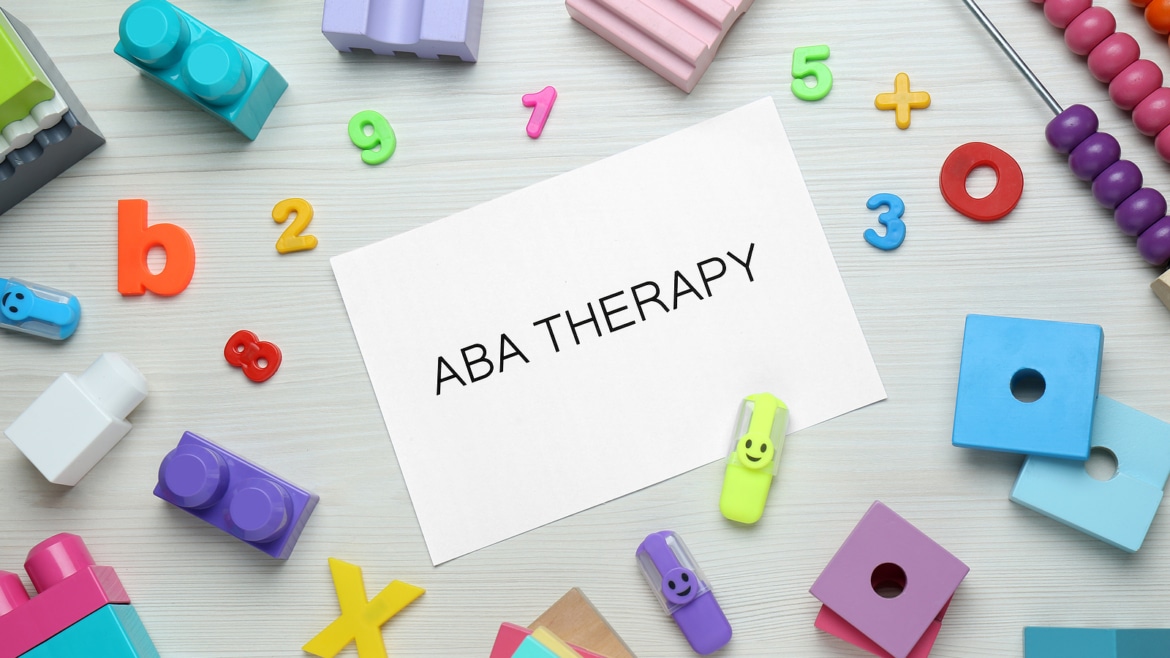When it comes to helping children with autism to achieve their learning goals, and to become participating, contributing, and independent members of society, intensive applied behavior analysis, or ABA, is currently the educational treatment approach with the strongest scientific support. Given that as of yet there is no known cure or preventative treatment for this neurodevelopmental disorder, all parents and guardians of children recently diagnosed with autism should be equipped with ABA knowledge and skills.
So, what is applied behavior analysis, and why should you have a behavior analyst on your child’s team?
What is Applied Behavior Analysis?
Behavior analysis is the scientific approach to understanding how environment affects behavior. These days it is generally accepted that behavior is impacted greatly by both biological and environmental factors. Professional and academic fields as diverse as education and advertising examine how various aspects of the environment affect human behavior, to promote their respective knowledge bases and goals.
Behavior analysis stands out among these fields as a science. It relies on the same tools as other sciences: clear definitions, objective measurement, controlled experimentation, data analysis, and replication. Applied behavior analysis utilizes these tools in order to bring about important changes in the behavior of individual clients. A behavior analyst then, is a scientist-practitioner who can help your child to achieve her own goals and potential.
What Does a Behavior Analyst Do?
A behavior analyst is an expert observer, and her focus is behavior of the individual. Your behavior analyst will directly observe your child’s behavior in a variety of environments, to develop an accurate picture of his current learning strengths and needs. The behavior analyst will objectively define the behaviors she is observing, so that everyone on the team can also observe, and reliably agree on what they are seeing.
She will clarify murky terms such as “share” into more precise descriptions, like “put a toy in someone’s hand.” Such clear, objective information provides you with an accurate baseline of your child’s current skills and performance, and permits ongoing evaluation as to the effectiveness of therapies and treatments. This is essential for you in order to make sound decisions about your child’s treatment.
Your behavior analyst is also skilled at experimentation. She selects procedures to address your child’s various learning goals, and then design mini-experiments to determine the effects of these procedures on your child’s behaviors. When it comes to which treatments to use, she is well-positioned to select interventions that are likely to work with your child.
Her treatment toolkit is uniquely stocked with interventions supported by the latest scientific research, and anchored in the durable principles of behavior analysis. One example is video modeling, in which video clips are used to prompt a child to perform a new behavior, such as putting on a jacket. Another is prompt fading, in which the assistance provided to a child while acquiring a new skill is systematically reduced to promote independent use of the skill and to prevent dependence on adult assistance.
Your behavior analyst will train instructors, family members, and others to implement the selected procedures, so that your child will use his new skills across the many people and places in his life. She will oversee data analysis on how your child’s behavior is responding to the various treatments to ensure they are working for him, and will recommend program modifications based on this data.
In summary, a behavior analyst will help you to clearly define the strengths and learning needs of your child. She will address those needs using research-based methodologies, and will guide your child’s program based on his performance data, to maximize her progress and development.
Why Do I Want a Behavior Analyst on My Child’s Team?
Because your child is a unique individual. If your child has been diagnosed with autism, then a professional has determined that he is experiencing significant challenges in the three general areas: language, social communication, and restricted interests/repetitive behaviors. Yet, while all children with autism show some challenges in each of these diagnostic areas, the similarities between children end there.
One child may speak somewhat typically but be unable to engage in a two-way conversation, while another may not speak at all; one child may repeat all of the bus routes in town, while another may only play with a single Thomas the Tank Engine by rolling it along the edge of a table. In other words, children with autism all share similar diagnostic features, but they are very different from one another.
Behavior analysts are well-suited to this predicament; by definition, behavior analysis examines the behavior of the individual. A behavior analyst applies her knowledge of autism treatments to her understanding of how these challenges manifest distinctly for your child. Importantly, the behavior analyst addresses these challenges by building on your child’s personal strengths and motivations.
Every opportunity should be a learning opportunity. We know that early intervention works. A majority of young children with autism respond well to early intensive ABA intervention, and earlier gains can magnify subsequent learning opportunities and later progress. As a parent, you want to maximize your child’s time spent engaged in learning that is working to address her autism symptoms and further develop her strengths. This means selecting the most effective and efficient treatments for your child — a daunting task, given the explosion of internet and other material directed at parents of children with autism: the tempting promises of cures, simple fixes, and attractively packaged therapies.
When recommending and selecting procedures to use, your behavior analyst begins with those documented in the scientific behavior analytic literature, ideally with subjects who are similar in age and diagnosis to your child. There are now hundreds of scientific studies documenting the effectiveness of various behavior analytic procedures for children with autism. The behavior analyst narrows the selection based on individual variables related to your child’s profile, such as pre-requisite skills, child and parent preferences, and ease of implementation. Examples of well-researched, effective ABA procedures include prompting, fading, shaping, chaining, and differential reinforcement.
Some of the more celebrated ABA approaches, such as pivotal response treatments and discrete trial training, are actually complex combinations of individual procedures. Uniquely, all applied behavior analytical procedures are based on the original behavior analytic principles — the science of behavior — which have been established for more than fifty years.
Your behavior analyst will not only ensure that your child’s time is being spent engaged in evidence-based therapies, she will supervise the collection of data to ensure that these therapies are actually working. If your child is not progressing with specific treatments, she will recommend modifications.
If you are interested in pursuing non-behavior analytic treatments, a behavior analyst can assist you in evaluating the quality of evidence available for these treatments, so you can make informed decisions on how to maximize your child’s progress, and avoid ineffective and possibly harmful treatments. (All parents of children with new autism diagnoses should read Gina Green’s chapter Evaluating Claims About Treatments for Autism in Catherine Maurice’s book Behavioral Interventions for Young Children with Autism.)
Your behavior analyst will not make promises. ABA does not come in a glamorous package. It is smart, hard, effective work.
Behavior analysts like to talk about pivotal behaviors, and so should you — we all need to focus on pivotal behaviors. They lead to desirable changes in the environment which then lead to more and more complex pivotal behaviors, and then further positive environmental changes — an upward spiral of skill growth and resulting increase in life opportunities.
Let’s look at the ability to make a choice as an example of a pivotal behavior. For a young child with autism, making a choice may begin as simply choosing between two visible selections. This generally results in a positive change for him — he might get to participate in an activity he himself has selected, rather than one chosen by someone else. When our actions have preferred outcomes, we tend to repeat them. So, this child will likely continue to make choices — perhaps initially from two visible options, and later when presented with a few verbal options, and perhaps in the more distant future when discussing together with the family “what should we do this weekend?”
The significance of learning this basic skill of choosing between two selections is pivotal because it can naturally lead to further vocabulary growth and independent choice-making behavior. As a society we greatly value being able to make choices for ourselves, and often consider our options and ability to make choices as a quality of life indicator. So, too, will your child be happier and less likely to use problem behaviors when there are opportunities to make choices in his life, and when he has the skills to take advantage of those opportunities.
A behavior analyst will guide your child’s program towards such pivotal behaviors, which maximize the kind of learning that leads to further learning and a greater quality of life for your child.
How do I Find A Qualified Behavior Analyst?
The first place to look is the Behavior Analysis Certification Board (BACB), where a list of board certified behavior analysts (BCBA’s) in your area can be found. A BCBA is qualified, at a minimum, with master’s level course work in behavior analysis, supervised practice as a behavior analyst, and a passing score on a board certifying exam.
BCBA’s have master’s degrees in behavior analysis or related fields (e.g. special education, psychology), and BCBA-Ds have doctorates. In addition to the above initial qualifications, BCBA’s are obliged to document their engagement in ongoing professional development activities such as conferences, workshops, and coursework. BCBA’s must also adhere to the Behavior Analysis Guidelines for Ethical Conduct. Thus, a BCBA is accountable to the communities she serves via the Behavior Analysis Certification Board.
This is not to imply that practitioners without a BCBA are not skilled or qualified. There are expert behavior analysts who have had years of training and experience, who are not board certified. And board certification does not guarantee that a behavior analyst is good, or is a good match for your child.
Beyond the above minimum competencies, seek a behavior analyst with at least a few years of experience in working with young children with autism, and with current knowledge of the autism research literature. Finally, as with all professionals on your child’s team, find someone with whom you feel comfortable — a good match.
Originally posted on Thinking Autism Guide




